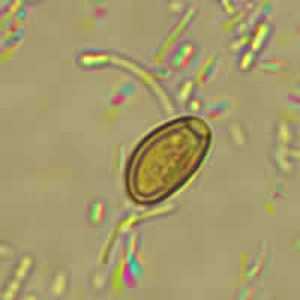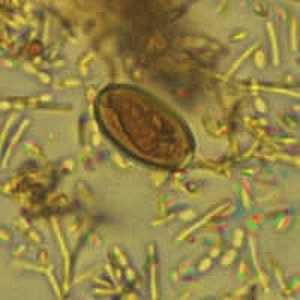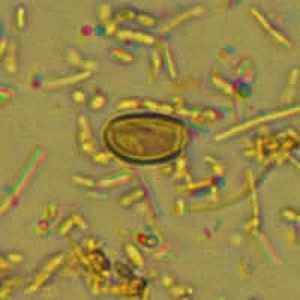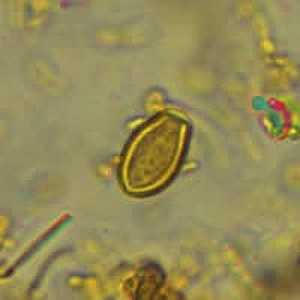
Case #318 - March, 2012
A patient with travel to Mexico presented to his local public health facility with general abdominal discomfort. A stool specimen was collected and processed using the formalin-ethyl acetate (FEA) procedure. A wet mount was prepared and examined. Digital images were captured at 1000x oil magnification and sent to DPDx for consultation. Figures A-D show the objects of interest, which measured 12-15 micrometers in length. What is your diagnosis? Based on what criteria?

Figure A

Figure B

Figure C

Figure D
Case Answer
The objects in this case were artifacts (possibly algal or fungal spores) and the correct diagnosis was No Parasites Found (NPF). The artifacts somewhat resembled the eggs of trematodes. The eggs of intestinal and hepatic trematodes are larger; the smallest (Opisthorchis spp.) are usually at least 25 micrometers long.
More on: Artifacts
Images presented in the monthly case studies are from specimens submitted for diagnosis or archiving. On rare occasions, clinical histories given may be partly fictitious.
DPDx is an education resource designed for health professionals and laboratory scientists. For an overview including prevention and control visit www.cdc.gov/parasites/.
- Page last reviewed: August 24, 2016
- Page last updated: August 24, 2016
- Content source:
- Global Health – Division of Parasitic Diseases and Malaria
- Notice: Linking to a non-federal site does not constitute an endorsement by HHS, CDC or any of its employees of the sponsors or the information and products presented on the site.
- Maintained By:


 ShareCompartir
ShareCompartir